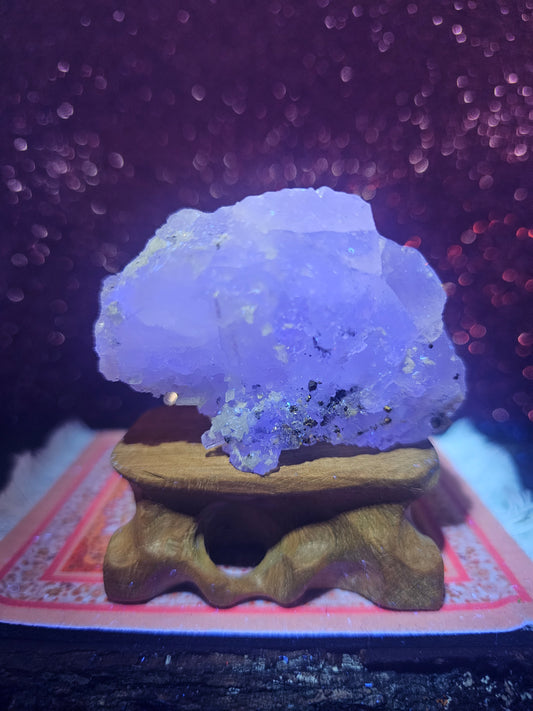Gemstones have captivated human fascination for millennia, and among these treasures of the Earth, lapis lazuli stands out as a gem of extraordinary beauty and historical significance. Revered by ancient civilizations, coveted by artists, and treasured for its rich blue hue, lapis lazuli has a story as vibrant as its color. In this blog, we will delve into the fascinating world of lapis lazuli, exploring its origins, cultural significance, uses, and its enduring allure in the modern world.
The Origins of Lapis Lazuli
Lapis lazuli, often referred to as "lapis" for short, is a striking blue gemstone composed primarily of the mineral lazurite, along with pyrite (fool's gold), calcite, and small traces of other minerals. Its name is derived from two Latin words: "lapis," which means stone, and "lazuli," which comes from the Persian word "lazhward," signifying blue. The deep azure color of lapis lazuli is what makes it so coveted.
Lapis lazuli has been mined for thousands of years, with some of the earliest sources located in Afghanistan's Badakhshan province, which remains a primary supplier of the gem to this day. Other notable deposits are found in Chile, Russia, and Pakistan. Ancient civilizations such as the Sumerians, Egyptians, and Persians cherished lapis lazuli and used it for various purposes, from jewelry to religious artifacts.
Cultural Significance and History
-
Egyptian Civilization: Lapis lazuli was highly prized in ancient Egypt, where it was used to create jewelry, burial masks, and even ground into a powder to make the famous ultramarine pigment for paintings. It was associated with the divine and believed to protect wearers from negative energies.
-
Mesopotamian and Persian Cultures: Mesopotamian and Persian cultures also revered lapis lazuli, using it to create decorative items, seals, and amulets. The Persian word "lazhward" reflects the stone's enduring cultural importance.
-
Medieval Europe: Lapis lazuli found its way to Europe during the Middle Ages, where it was a symbol of wealth and power. Artists like Michelangelo and Vermeer used it in their masterpieces, contributing to its reputation as a gem of artistic inspiration.
-
Spiritual Significance: Lapis lazuli has spiritual significance in various traditions, including Buddhism and Hinduism. It is often associated with wisdom, inner peace, and enlightenment.
The Uses of Lapis Lazuli
Lapis lazuli has been prized for its aesthetic and mystical properties throughout history. Here are some of its primary uses:
-
Jewelry: Lapis lazuli's deep blue color and natural flecks of gold pyrite make it a favorite gemstone for jewelry. It is often cut into cabochons, beads, and carved into intricate designs.
-
Art and Pigments: The powdered form of lapis lazuli, known as ultramarine, has been used by artists for centuries. It was considered more precious than gold in some cases due to its rarity and vibrant color.
-
Ornamental and Decorative Objects: Lapis lazuli has been carved into statues, vases, and other decorative items, showcasing its deep blue beauty.
-
Metaphysical and Healing: Some believe that lapis lazuli possesses metaphysical properties, promoting mental clarity, self-awareness, and communication. It is also thought to help with physical ailments like headaches and stress.
The Modern Appeal of Lapis Lazuli
In the contemporary world, lapis lazuli continues to captivate people with its timeless beauty and cultural significance. It is still used in high-end jewelry, and artists value it for its rich pigment. Additionally, lapis lazuli remains a symbol of wisdom, truth, and enlightenment, making it a popular choice for those seeking personal and spiritual growth.
Lapis lazuli, with its deep blue hue and storied history, is a gem that has enchanted humanity for millennia. From ancient civilizations to modern artists and seekers of spiritual enlightenment, lapis lazuli's allure endures. Its beauty, cultural significance, and mystical properties make it a gemstone that will continue to be cherished for generations to come, a timeless testament to the enduring fascination with the Earth's precious treasures.





